#Python Programming
Text
I come across a great site to learn coding, I don’t see a lot of people talking about it tho. (There is an app too!)
This site has python 101 for free (and many another, tho course from 102 and up aren’t free)

Its has a cute design and great at explaining the small details that some teachers don’t explain ✨

There is also many exercises in each chapter of the lessons.
You can check more about it from there official site ✨
Happy coding you all 🫶🏻
#codeblr#python#coding#learn to code#programming#python programming#html#javascript#javafullstackdeveloper#learn sql#sql course#sqldeveloper#phpwebsitedevelopment#php programming
2K notes
·
View notes
Text








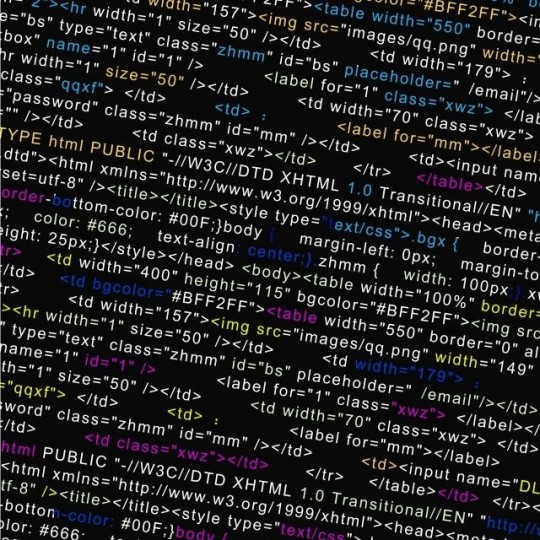
Programming as an Aesthetic.
#coding#programming#programmer#python#python programming#code#studyblr#study notes#study desk#studying#study aesthetic#studygram#studyspo#programming aesthetic#data science#computer science#javascript#c++ language#c language#machine learning
1K notes
·
View notes
Text
Does anyone else have dreams about coding? Like I figure out my real world coding problems in my sleep, it's weird.
#codeblr#cosmickittytalk#dreams#learning programming#programming humor#csharp programming#programming#java#java programming#csharp#csharp is superior#python#python programming#sleep#coding
104 notes
·
View notes
Text
FreeCodeCamp recommend this Python course ...
youtube
Post #87: FreeCodeCamp, Beau Carnes, Ultimate Beginner's Python Course on YouTube by Dave Gray, 2023.
#programming#coding#coding is fun#i love coding#coding for kids#education#i love python#learning#i love programming#programming language#youtube#dave gray#python programming#python tutorial#Youtube
54 notes
·
View notes
Text

This is part of a new project I am doing for a Facebook app that can alert someone when there is suspicious activity on their account, and block people who post rude comments and hate speech using a BERT model I am training on a dataset of hate speech. It automatically blocks people who are really rude / mean and keeps your feed clean of spam. I am developing it right now for work and for @emoryvalentine14 to test out and maybe in the future I will make it public.
I love NLP :D Also I plan to host this server probably on Heroku or something after it is done.
#machine learning#artificial intelligence#python programming#programmer#programming#technology#coding#python#ai#python 3#social media#stopthehate#lgbtq community#lgbtqia#lgbtqplus#gender equality
68 notes
·
View notes
Text

30th and 31st August 2023
(Yes 2 daily logs in a row)
Today's goals
Complete one past paper for bio
Finish chemistry homework
Finish the 8th question for physics worksheet
Read about gas exchange for bio
Revise projectile motion
Speed run Python course
Figure out personal learning plan for French
Break-down and simplify some tasks (simplifying tasks literally helps a lot if you have too many things going on)
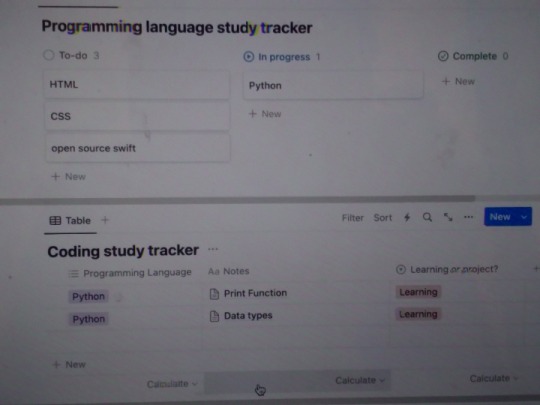

what I did for self-care:
Listened to music
did some journalling
looked for some study motivation
tried to plan for tomorrow
read a book i like
Binge-watched some anime (also Zoro got shut down 😭😭😭 how can I keep track of my anime now)

"I'm sighing in my dreams"
how are you guys?!?
I forgot to check my school messages lmao (I do online school), I woke up late opened my laptop and sat there waiting for the teachers to reply to my messages. Guess who forgot yesterday and today are holidays? I DID! Honestly, I was so stressed out but I started by reading some bio, then did my chemistry homework. After that, I met up with my tutor and studied Enzymes with her. Then I sat down again to do some speed running, looked into a webinar for my French learning and self-care and gosh it's tiring to be a student!
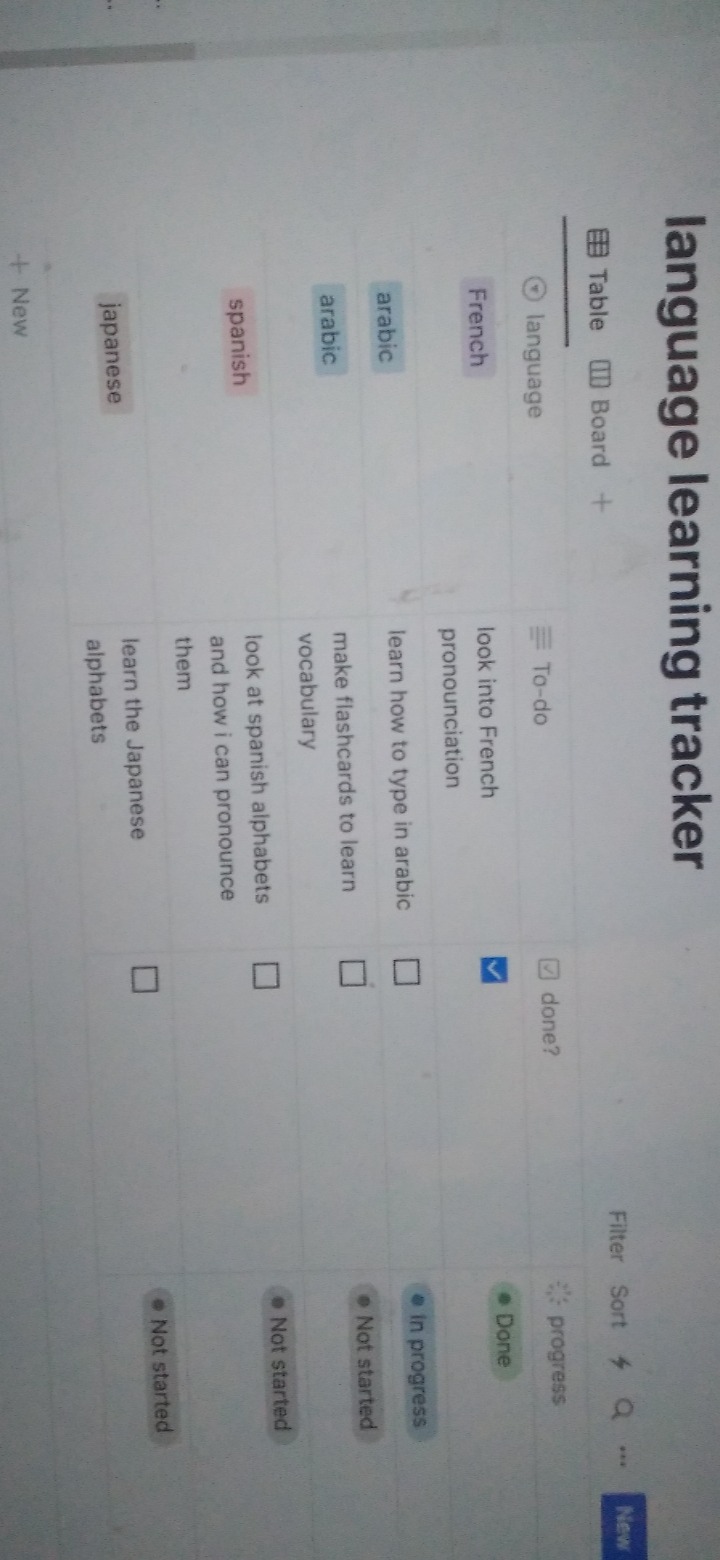
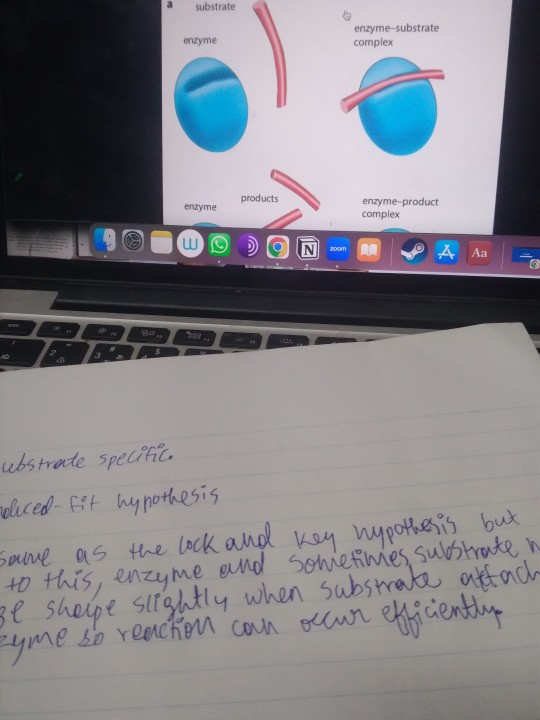

#a level studyblr#online school#study inspo#a levels#desi studyblr#student life#chaotic academic aesthetic#chemistry#a level physics#a level chemistry#a level biology#planning#digital planner#indian studyblr#new studyblr#a level exams#codeblr#python programming#speedrun#frenchblr#french langblr#french language#notion aesthetic#notion#personal notes#aesthetic notion
61 notes
·
View notes
Text
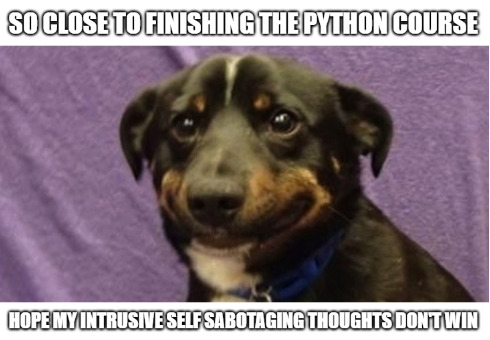
#anxiety memes#programming meme#cs50#cs50p#python programming#python#programming#progblr#coding#codeblr
17 notes
·
View notes
Text
python - a brief history
In 1989, Guido van Rossum, a Dutch computer scientist, started working on a new programming language that would be easy to learn and use. He named it after Monty Python's Flying Circus, his favorite TV show.
The language quickly gained popularity and a cult following among developers who loved its simplicity and ease of use. Python soon became the language of choice for scientific and academic communities.
As Python's popularity grew, it faced some significant hurdles. In the early days, critics panned the language for being slow and inefficient compared to other programming languages. However, the Python community was undeterred and developed several optimization techniques and libraries to improve performance.
In 2000, Guido van Rossum released Python 2.0, which introduced a number of major new features and improvements, including list comprehensions, a garbage collector, and support for Unicode. This version of the language solidified its position as a powerful and versatile programming language.
Over time, Python faced some new challenges. The release of Python 3.0 in 2008 introduced significant changes that caused compatibility issues with earlier versions of the language. However, the Python community rallied to provide tools and resources to help developers transition to the new version.
Despite these challenges, Python has continued to grow and evolve. Today, it is one of the most popular programming languages in the world, with a vast ecosystem of libraries and tools. Python is used for everything from web development and data analysis to scientific computing and artificial intelligence.
Python's success can be attributed to the passion and dedication of its community, who have worked tirelessly to overcome challenges and make the language accessible to everyone. Guido van Rossum may have created Python, but it is the community that has made it a force to be reckoned with in the world of programming.
#python#history#learn#programming language#programming#computer language#history of#learn python#python programming#computer history#digital technology#developers#developer#info#information#birth of python#python the programming language#guido#rossum#python language#geek#nerd#nerdy#interpreted#interpreted language#fun#computer science#technology
93 notes
·
View notes
Text
hey would any python programmers be willing to help me with my code? i’m having a small issue with an if statement and stack overflow won’t let me post a question
11 notes
·
View notes
Text
Python for Software Development Book | Resource ✨
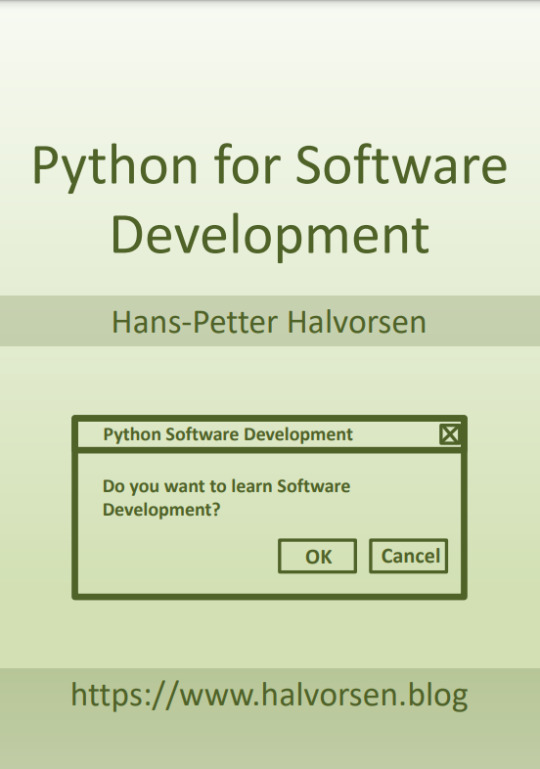
>> Link to the book <<
Does it look sketchy? Yes. But is it really good? Yes.
#resources#programming#coding#coding book#programming book#comp sci#computer science#100daysofcode#100 days of code#python#python beginner#pythonprogramming#python programming#python projects
137 notes
·
View notes
Text
Small Basic meets Python, #24 Prime Numbers ...
youtube
Post #215: YouTube, Socratica, Python Tutorial, #24 Python and Prime Numbers, 2024.
#programming#coding#programmieren#education#python#python for ever#programming language#python programming#socratica#Youtube#python tutorial#learing#studying
6 notes
·
View notes
Text

I was playing Persona 5 the another day and I saw this!
I will post it here as a reminder to have my own way of coding 💻✨
#codeblr#coding#learn to code#programming#100daysofcode#womanintech#webdevelopment#python#html#python programming#javascript#full stack web development#html css#c sharp#front end development#website development#webdev#software engineering#javafullstackdeveloper#tech
83 notes
·
View notes
Note
Could you tell me about python programming? It popped into my head soon after I realized I was programmed and it’s been a month and I’m not sure what’s going on anymore. Any explanation would be helpful
Python Programming- Is used to distract the alter by leading to feelings of being crushed, suffocated, or strangled.
Type 2 Python Programming-Belief in divination. (Spiritual Programming)
Type 3 Python Programming-The belief that a part is a “python spirit” and gathers information about believers and uses the information to call other demons to attack people or churches. The function of the “spirit of python” as held by one group may overlap that of other groups, which may be called Leviathan, Kundalini, or “water spirits.” (Spiritual Programming)
Here’s a link to another post on Python.
Oz
7 notes
·
View notes
Text
I'm feeling a lot of imposter syndrome lately, and it's really bothering me. I just want it to go away. I know I'm a junior level dev, but even my senior level dev husband feels imposter syndrome too, so I'm probably going to be plagued with this off and on.
#cosmickittytalk#imposter syndrome#girls who code#codeblr#csharp programming#java programming#python programming#javascript
31 notes
·
View notes
Text
Is it possible to learn Python by using Android apps?
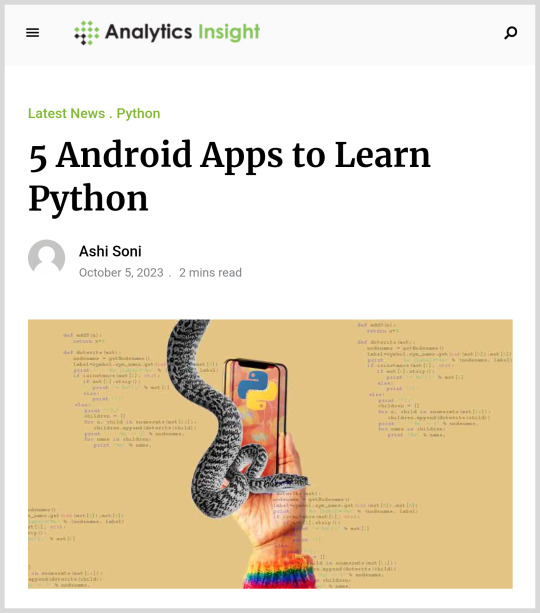
Post #92: Analytics Insight, 5 Android Apps To Learn Python, 2023.
#programming#coding#education#i love coding#learning#coding is fun#i love python#coding for kids#programming language#i love programming#analytics insight#android apps#python coding#learn python#python tutorial#python#python programming
35 notes
·
View notes
Text
Predicting Alzheimer's With Machine Learning
Alzheimer's disease is a progressive neurodegenerative disorder that affects millions of people worldwide. Early diagnosis is crucial for managing the disease and potentially slowing its progression. My interest in this area is deeply personal. My great grandmother, Bonnie, passed away from Alzheimer's in 2000, and my grandmother, Jonette, who is Bonnie's daughter, is currently exhibiting symptoms of the disease. This personal connection has motivated me to apply my skills as a data scientist to contribute to the ongoing research in Alzheimer's disease.
Model Creation
The first step in creating the model was to identify relevant features that could potentially influence the onset of Alzheimer's disease. After careful consideration, I chose the following features: Mini-Mental State Examination (MMSE), Clinical Dementia Rating (CDR), Socioeconomic Status (SES), and Normalized Whole Brain Volume (nWBV).
MMSE: This is a commonly used test for cognitive function and mental status. Lower scores on the MMSE can indicate severe cognitive impairment, a common symptom of Alzheimer's.
CDR: This is a numeric scale used to quantify the severity of symptoms of dementia. A higher CDR score can indicate more severe dementia.
SES: Socioeconomic status has been found to influence health outcomes, including cognitive function and dementia.
nWBV: This represents the volume of the brain, adjusted for head size. A decrease in nWBV can be indicative of brain atrophy, a common symptom of Alzheimer's.
After selecting these features, I used a combination of Logistic Regression and Random Forest Classifier models in a Stacking Classifier to predict the onset of Alzheimer's disease. The model was trained on a dataset with these selected features and then tested on a separate dataset to evaluate its performance.
Model Performance
To validate the model's performance, I used a ROC curve plot (below), as well as a cross-validation accuracy scoring mechanism.
The ROC curve (Receiver Operating Characteristic curve) is a plot that illustrates the diagnostic ability of a model as its discrimination threshold is varied. It is great for visualizing the accuracy of binary classification models. The curve is created by plotting the true positive rate (TPR) against the false positive rate (FPR) at various threshold settings.

The area under the ROC curve, often referred to as the AUC (Area Under the Curve), provides a measure of the model's ability to distinguish between positive and negative classes. The AUC can be interpreted as the probability that the model will rank a randomly chosen positive instance higher than a randomly chosen negative one.
The AUC value ranges from 0 to 1. An AUC of 0.5 suggests no discrimination (i.e., the model has no ability to distinguish between positive and negative classes), 1 represents perfect discrimination (i.e., the model has perfect ability to distinguish between positive and negative classes), and 0 represents total misclassification.
The model's score of an AUC of 0.98 is excellent. It suggests that the model has a very high ability to distinguish between positive and negative classes.
The model also performed extremely well in another test, which showed the model has a final cross-validation score of 0.953. This high score indicates that the model was able to accurately predict the onset of Alzheimer's disease based on the selected features.
However, it's important to note that while this model can be a useful tool for predicting Alzheimer's disease, it should not be the sole basis for a diagnosis. Doctors should consider all aspects of diagnostic information when making a diagnosis.
Conclusion
The development and application of machine learning models like this one are revolutionizing the medical field. They offer the potential for early diagnosis of neurodegenerative diseases like Alzheimer's, which can significantly improve patient outcomes. However, these models are tools to assist healthcare professionals, not replace them. The human element in medicine, including a comprehensive understanding of the patient's health history and symptoms, remains crucial.
Despite the challenges, the potential of machine learning models in improving early diagnosis leaves me and my family hopeful. As we continue to advance in technology and research, we move closer to a world where diseases like Alzheimer's can be effectively managed, and hopefully, one day, cured.
#alzheimersresearch#alzheimersdisease#dementia#neurology#machinelearning#ai#artificialintelligence#aicommunity#datascience#datascientist#healthcare#medicalresearch#programming#python programming#python#python 3
54 notes
·
View notes